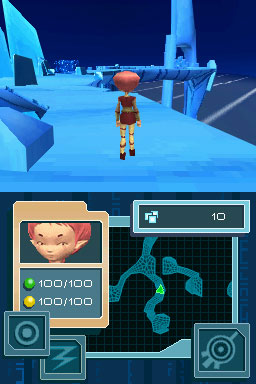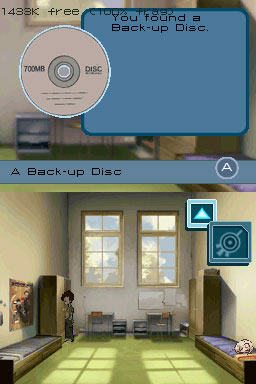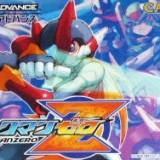Code Lyoko (DS) Re-Evaluation
By raycarter 10 Comments
Originally submitted in Chronicles of Ciahlo
The Lyoko--game-thon begins with the simply named "Code Lyoko", a product released in late 2007 by little-known Game Factory, the same European publisher that will issue the other two Code Lyoko games. It is a game that takes no risk, and while there are flashes of good fun to be had, the game ultimately leaves a relatively mediocre impression.
As an adaptation from the French cartoon, a fable about a couple of kids digitizing into a virtual world to stop a computer program, the game sticks faithfully to the source material. Graphics are pulled straight out of the silver screen and onto the DS screen with respectable respects. While the real-life 2D portions really look like what you see in the show, it's the 3D bits in the virtual world known as Lyoko that look eye-catching, from the various mountain/forest/desert/ice sectors. The monsters, both made up or found in canon with the work, look the best, while character models are not far behind in terms of quality. From the sound department, the game really borrows a lot of the soundtrack from the show, so fans will recognize some if not all of the beats. Sadly there is no voice acting, as sparse use of minor grunts and gasps don't count.

The game follows a very scripted formula. Usually there is a problem to be solved in the 2D/real life world. You guide a character from Point A to Point B, maybe picking important items along the way, then using those same items to save the day temporarily. The main protagonists then virtualize into Lyoko, and once again the formula is pretty straightforward; go through some platforming parts, arrive at a huge open field to start battle, rinse and repeat until you reach your destination. There are some variations to the journey. There puzzles to solve, some spots where the characters need to use context-sensitive abilities, a couple of boss fights, upgrades/fighting moves to purchase and even some levels where you ride a vehicle in Lyoko through a narrow track of land, but for 95% of the time you are following the aforementioned script.
There are some good moments in the game. Fighting is more of a case of using one specific move to defeat a certain enemy type. It doesn't resonate with the player, but combat can get players into a groove, killing wave after wave of enemies effortlessly. There are also moments when you're going at breakneck speed, like how Ulrich uses Super Sprint to traverse difficult obstacles or how a character floors a vehicle to reach maximum speed. I also like the parts when one character levitates through a grand chasm backed by a subtle and soothing sound effect. There are also great moments of platforming; the problem is that those moments are too few and far between.
Counterbalacing these flashes of goodness is the realization that this game is way too easy for its own good. Even when a character gets kicked out of Lyoko by taking too much damage from monsters, the price to re-admit them to Lyoko (data points that are abundant in Lyoko) is incredibly cheap. The only legit way you lose is when one protagonist, Aelita, loses all her hit points, or when you fail a vehicle section. Even with those issues, there are numerous checkpoints and players have so many opportunities to complete the stage, despite the fact that enemies and bosses actually put up a good fight.
A grander issue from this game is in only following the story in a superficial level. I admit the presentation really seems like it's originating from the TV show, but the use of the show's plot is a different story. It does indeed follow the first two seasons of Code Lyoko, where the protagonist tries to free Aelita from Lyoko and shut down the computer program XANA for good, but that's where all the similarities end. The characters have the same amount of emotional punch to that of cardboard boxes; from the dialogue you don't really get the vibe that two characters are both fighting and romancing simultaneously, for instance. You also don't really know what's going on in the real world and in the lives of these main characters. I'm not trying to say that the show has great story, though the story unfolds well, but the game could do a lot better when it comes to establishing who the characters are, their likes and dislikes, and other bits of information to allow players to warm to the protagonists. Should this happen, people would care more about the plot itself.

In the end, Code Lyoko, the inaugural game on the DS, does little wrong but also little well. A lot of what you see in the game is of average quality especially when compared to other action games in the same DS port. The game also squanders a chance to craft an intriguing narrative, especially in the characterization department. Given that you can complete the game in under two days with very little replay value in return, and it's conclusive that this game is really suited for younger fans.
But of course, we're only in phase 1 of the Code Lyoko-thon. The game ends with the cliffhanger, when Aelita is free of the computer at the expense of XANA gaining more power, setting the stage for more conflicts ahead, as seen in the show. We'll see how the crusade against this malicious computer program progresses when I next review Code Lyoko: Quest for Infinity.
